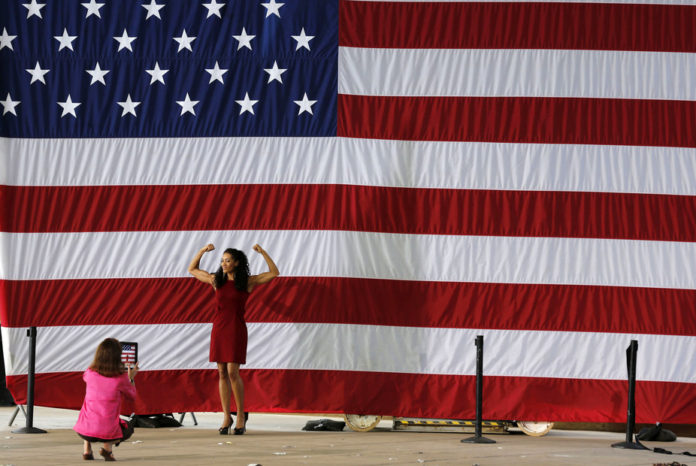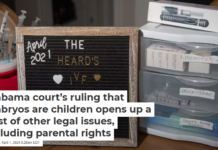

By Paru R Shah, University of Wisconsin-Milwaukee
A common complaint about American’s representative democracy is that it is not representative. Across all levels of office, most elected seats in the US continue to be occupied by white, non-Hispanic men.
Recent research by the Who Leads Us project found that 71% of elected officials in the US are men. Nine in 10 are white, even though people of color are more than 37% of the population.
For a long time, political science scholars blamed voters for the anomaly: as the majority of the voting populace, white voters were not voting for racial/ethnic minority candidates. And indeed, there is ample evidence that white voter bias has stood in the way of racial/ethnic minority candidates.
The role of candidates
Missing from this story, however, was the role candidates themselves play in determining the outcome of elections. Are there fewer black elected officials, for example, because they are running and losing, or because they aren’t running in the first place?
A number of recent articles on candidate supply suggest the latter is true. For example, Eric Gonzalez Juenke of Michigan State University analyzednearly 10,000 statehouse elections in 2000 and 2010 and found Latino candidates were on the ballot just 5% of the time.
But when Latinos did run for office, they won just as often as their white counterparts – even in districts where most voters were white. My own analysis of candidates running for local office in Louisiana comes to similar conclusions: once black candidates decided to run, they were equally likely to win office.
So the answer to the question of why we have so few racial and ethnic elected officials winning office is that we have few racial and ethnic minority candidates running for office.
Why don’t minorities run?
What influences their decision to run? For one, we can look to the recent research by Jennifer Lawless and Richard Fox , who point to important psychological barriers: often minority candidates (racial/ethnic and gender) perceive themselves to be less qualified and therefore less electable than those who have the benefit of prior representation – white, non-Hispanic men.
Recent analysis of first- and second-generation immigrant candidates by Tyler Reny from the University of Washington and myself corroborates this conclusion – even then candidates of color are equally qualified (as measured by education, prior experience, and resources), they see themselves as less likely to win than white candidates.
Second, strategic candidates consider the past. Have other Latino, black, Asian candidates run for and won this office? Research has confirmed that the initial hurdle is indeed the highest.
After the first attempts, it becomes easier for additional minorities to run for office. Between 2000 and 2010, the likelihood of a black candidate running in Louisiana was almost five times greater in jurisdictions where a black candidate had run before than in jurisdictions where it would be the first black candidacy.
In addition, black incumbents are re-elected more than 60% of the time. Thus, in part this is a chicken and egg problem – more minorities will run when more minorities have run.
Parties matter
Last, but not least, is the role political parties play in the recruitment of racial/ethnic minority candidates. Across all minority groups, individuals run because they are asked.
How often do the Republican and Democratic nominating committees reach out to candidates of color?
To date, very little empirical work on this question has been available for analysis, although anecdotal evidence suggests that both parties are very interested in identifying “diverse” candidates.
The GOP’s “Growth and Opportunity Project” lays out their strategic plan to recruit “the highest-quality candidates with the greatest potential for leadership and make certain that we are actively engaging women and minorities in our efforts.” The Democratic Party has long attracted a more diverse candidate pool, but has also publicly ramped up efforts to recruit candidates of color.
Breaking the barriers
Combatting these psychological and structural barriers has spurred a number of candidate recruitment and training organizations, particularly for candidates of color – for example, the New American Leaders Project, One America, Emerge America.
Importantly, each of these organizations identifies the racial/ethnic and immigrant experience as an asset in civic leadership that can be used to win elections.
America is becoming more diverse, and citizens are demanding their representative government keep up. As populations shift and America moves closer to being majority-minority, we should expect these candidates to see themselves as more electable, and see more qualified candidates emerge.
Every election year provides a new opportunity to witness this shift. On November 4, 2014, a record 100 black candidates will be on the ballot in statewide and congressional races.
Latinos are running for top offices in 42 states. And Asian Americans are seeking 10 statewide offices. While we are far from the goal of candidates of color running in line with their population size, we are on the road to getting there.
![]()
Paru R Shah receives funding from the National Science Foundation. She is an elected board member of the Shorewood School District (WI).
This article was originally published on The Conversation.
Read the original article.



















